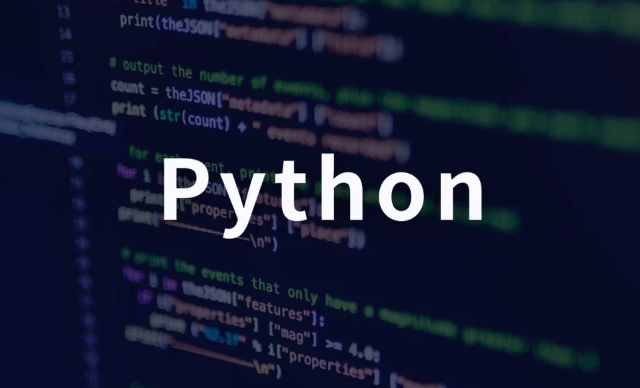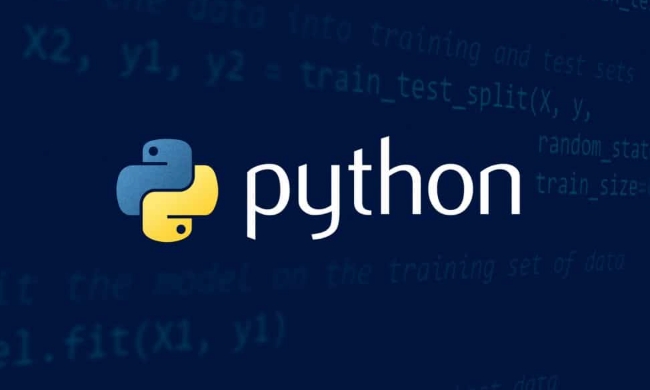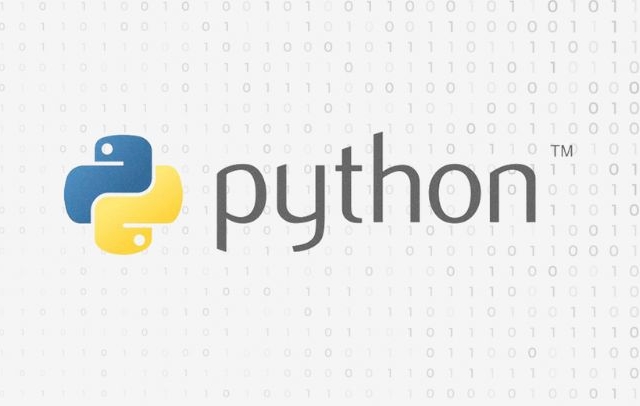Python type prompts are used to explicitly label variables, function parameters, and return value types to improve code readability and maintainability. It is not a mandatory type check, but a "comment" for developers and tools to refer to. 1. Function parameters and return values ??can be marked in a manner similar to def greet(name: str) -> str; 2. Basic types such as int and str are used directly; 3. Container types can be used generics such as list[int] or dict[str, int]; 4. Optional[str] is used for optional types, and Union[int, float] is used for many types; 5. Custom classes can also be used as types. Type prompts will not affect the program's operation, but with IDE or tools such as mypy, you can detect errors in advance, improve the automatic completion experience, and provide assistance during refactoring. It is recommended to add it step by step, especially suitable for team collaboration and long-term maintenance projects.

Python type hinting is a mechanism for explicitly labeling variables, function parameters, and return value types in code. Its main purpose is to improve the readability and maintainability of the code, rather than force type checking. Type hints are features introduced in Python 3.5. With them, developers can express their intentions more clearly and make it easier for tools such as IDEs and static analyzers to understand and process code.

What is the actual look of type prompts?
You may have seen codes like this:
def greet(name: str) -> str:
return "Hello, " name Here name: str means that the parameter name should be of string type, and -> str means that this function should return a string. This is just the most basic usage.

This writing method will not affect the operation of the program, and Python is still dynamic. In other words, even if you pass an integer in, the program will still be executed (of course there may be an error). Type hints are more like "comments" for programmers and tools.
Why use type prompts?
Many people think that adding types is unnecessary at first, but in fact it has several very practical benefits:

- Improve code readability : You can see at a glance what type of parameters the function accepts and what type it returns.
- Reduce bugs : IDE or type checking tools (such as mypy) can detect some obvious errors in advance.
- Convenient refactoring : When you modify a large project, clear type information helps understand dependencies.
- Better automatic completion experience : Many editors will use type information to provide more accurate smart tips.
For example, if you wrote:
def add(a: int, b: int) -> int:
return ab Then accidentally call add("1", 2) , and a warning will be marked in the editor for PyCharm or VSCode.
Common Usages and Tips
Here are some common type tips for beginners to understand:
- Write basic types directly, such as
int,str,float,bool - The container type can be added with generics, such as:
-
List[int]represents a list of integers -
Dict[str, int]of Dictionary where the key is a string and the value is an integer
-
- Optional type is
Optional, for exampleOptional[str]can be a string or None - Various types can be used as
Union, such asUnion[int, float]to represent an integer or floating point number. - Custom classes can also be used as types, such as
def process(user: User): ...
Note: Starting from Python 3.9, you can directly use built-in types such as list[int] without importing List . However, it is also common in old projects to import from typing .
How to start using type prompts?
If you are a novice, it is recommended to start with these places:
- Add parameters and return types to the function
- Add types when declaring variables (especially complex structures)
- Use a type checking tool (such as mypy) to verify that your types are consistent
- If it is an existing project, you can add type prompts gradually without modifying them all at once
One thing to note is that type prompts are not mandatory. The Python interpreter itself does not check these types, so it is more like an auxiliary tool at the development stage.
Basically that's it. Although it seems simple, type hinging can help a lot in team collaboration or long-term maintenance.
The above is the detailed content of What is python type hinting?. For more information, please follow other related articles on the PHP Chinese website!

Hot AI Tools

Undress AI Tool
Undress images for free

Undresser.AI Undress
AI-powered app for creating realistic nude photos

AI Clothes Remover
Online AI tool for removing clothes from photos.

Clothoff.io
AI clothes remover

Video Face Swap
Swap faces in any video effortlessly with our completely free AI face swap tool!

Hot Article

Hot Tools

Notepad++7.3.1
Easy-to-use and free code editor

SublimeText3 Chinese version
Chinese version, very easy to use

Zend Studio 13.0.1
Powerful PHP integrated development environment

Dreamweaver CS6
Visual web development tools

SublimeText3 Mac version
God-level code editing software (SublimeText3)

Hot Topics
 How does Python's unittest or pytest framework facilitate automated testing?
Jun 19, 2025 am 01:10 AM
How does Python's unittest or pytest framework facilitate automated testing?
Jun 19, 2025 am 01:10 AM
Python's unittest and pytest are two widely used testing frameworks that simplify the writing, organizing and running of automated tests. 1. Both support automatic discovery of test cases and provide a clear test structure: unittest defines tests by inheriting the TestCase class and starting with test\_; pytest is more concise, just need a function starting with test\_. 2. They all have built-in assertion support: unittest provides assertEqual, assertTrue and other methods, while pytest uses an enhanced assert statement to automatically display the failure details. 3. All have mechanisms for handling test preparation and cleaning: un
 How can Python be used for data analysis and manipulation with libraries like NumPy and Pandas?
Jun 19, 2025 am 01:04 AM
How can Python be used for data analysis and manipulation with libraries like NumPy and Pandas?
Jun 19, 2025 am 01:04 AM
PythonisidealfordataanalysisduetoNumPyandPandas.1)NumPyexcelsatnumericalcomputationswithfast,multi-dimensionalarraysandvectorizedoperationslikenp.sqrt().2)PandashandlesstructureddatawithSeriesandDataFrames,supportingtaskslikeloading,cleaning,filterin
 What are dynamic programming techniques, and how do I use them in Python?
Jun 20, 2025 am 12:57 AM
What are dynamic programming techniques, and how do I use them in Python?
Jun 20, 2025 am 12:57 AM
Dynamic programming (DP) optimizes the solution process by breaking down complex problems into simpler subproblems and storing their results to avoid repeated calculations. There are two main methods: 1. Top-down (memorization): recursively decompose the problem and use cache to store intermediate results; 2. Bottom-up (table): Iteratively build solutions from the basic situation. Suitable for scenarios where maximum/minimum values, optimal solutions or overlapping subproblems are required, such as Fibonacci sequences, backpacking problems, etc. In Python, it can be implemented through decorators or arrays, and attention should be paid to identifying recursive relationships, defining the benchmark situation, and optimizing the complexity of space.
 How can you implement custom iterators in Python using __iter__ and __next__?
Jun 19, 2025 am 01:12 AM
How can you implement custom iterators in Python using __iter__ and __next__?
Jun 19, 2025 am 01:12 AM
To implement a custom iterator, you need to define the __iter__ and __next__ methods in the class. ① The __iter__ method returns the iterator object itself, usually self, to be compatible with iterative environments such as for loops; ② The __next__ method controls the value of each iteration, returns the next element in the sequence, and when there are no more items, StopIteration exception should be thrown; ③ The status must be tracked correctly and the termination conditions must be set to avoid infinite loops; ④ Complex logic such as file line filtering, and pay attention to resource cleaning and memory management; ⑤ For simple logic, you can consider using the generator function yield instead, but you need to choose a suitable method based on the specific scenario.
 What are the emerging trends or future directions in the Python programming language and its ecosystem?
Jun 19, 2025 am 01:09 AM
What are the emerging trends or future directions in the Python programming language and its ecosystem?
Jun 19, 2025 am 01:09 AM
Future trends in Python include performance optimization, stronger type prompts, the rise of alternative runtimes, and the continued growth of the AI/ML field. First, CPython continues to optimize, improving performance through faster startup time, function call optimization and proposed integer operations; second, type prompts are deeply integrated into languages ??and toolchains to enhance code security and development experience; third, alternative runtimes such as PyScript and Nuitka provide new functions and performance advantages; finally, the fields of AI and data science continue to expand, and emerging libraries promote more efficient development and integration. These trends indicate that Python is constantly adapting to technological changes and maintaining its leading position.
 How do I perform network programming in Python using sockets?
Jun 20, 2025 am 12:56 AM
How do I perform network programming in Python using sockets?
Jun 20, 2025 am 12:56 AM
Python's socket module is the basis of network programming, providing low-level network communication functions, suitable for building client and server applications. To set up a basic TCP server, you need to use socket.socket() to create objects, bind addresses and ports, call .listen() to listen for connections, and accept client connections through .accept(). To build a TCP client, you need to create a socket object and call .connect() to connect to the server, then use .sendall() to send data and .recv() to receive responses. To handle multiple clients, you can use 1. Threads: start a new thread every time you connect; 2. Asynchronous I/O: For example, the asyncio library can achieve non-blocking communication. Things to note
 Polymorphism in python classes
Jul 05, 2025 am 02:58 AM
Polymorphism in python classes
Jul 05, 2025 am 02:58 AM
Polymorphism is a core concept in Python object-oriented programming, referring to "one interface, multiple implementations", allowing for unified processing of different types of objects. 1. Polymorphism is implemented through method rewriting. Subclasses can redefine parent class methods. For example, the spoke() method of Animal class has different implementations in Dog and Cat subclasses. 2. The practical uses of polymorphism include simplifying the code structure and enhancing scalability, such as calling the draw() method uniformly in the graphical drawing program, or handling the common behavior of different characters in game development. 3. Python implementation polymorphism needs to satisfy: the parent class defines a method, and the child class overrides the method, but does not require inheritance of the same parent class. As long as the object implements the same method, this is called the "duck type". 4. Things to note include the maintenance
 How do I slice a list in Python?
Jun 20, 2025 am 12:51 AM
How do I slice a list in Python?
Jun 20, 2025 am 12:51 AM
The core answer to Python list slicing is to master the [start:end:step] syntax and understand its behavior. 1. The basic format of list slicing is list[start:end:step], where start is the starting index (included), end is the end index (not included), and step is the step size; 2. Omit start by default start from 0, omit end by default to the end, omit step by default to 1; 3. Use my_list[:n] to get the first n items, and use my_list[-n:] to get the last n items; 4. Use step to skip elements, such as my_list[::2] to get even digits, and negative step values ??can invert the list; 5. Common misunderstandings include the end index not






